Military Marches Toward Agility
Alternative competing concepts, constant debate foster a robust warfighting payoff.
Rewarding unconventional thinking and promoting a culture where people have the freedom and flexibility to take risks and try new things is a salient move by the U.S. Defense Department. In seeking to instill an entrepreneurial approach to developing military capabilities, a key element is to encourage people to behave less like bureaucrats.
The department is striving for a climate in which planners do not wait for threats to emerge but rather anticipate them and develop and deploy new capabilities quickly to dissuade and deter those threats, Vice Adm. Arthur K. Cebrowski, USN (Ret.), explains. The director of the Office of Force Transformation, he serves as advocate, focal point and catalyst for the transformation process, which challenges the status quo through new concepts and architectures for defense.
In the assignment for 18 months, Adm. Cebrowski reports directly to Defense Secretary Donald H. Rumsfeld. A naval aviator and former director of command, control, communications and computers (J-6), the Joint Staff, the admiral retired in 2001 while serving as president of the Naval War College. Rumsfeld says that the admiral, who is often called the father of network-centric warfare, is the ideal person to promote and analyze transformation efforts.
The global war on terrorism serves as strong impetus for change, making the Defense Department’s force transformation an even more urgent priority. Balancing risks between near- and far-term challenges is always difficult. However, with force transformation at the heart of its strategy, the department must simultaneously face several formidable challenges: successfully fight the global war on terror; prepare for near-term threats by making long-delayed investments in readiness, people and modernization; and prepare for the future by transforming.
The Defense Department’s approach identifies operational goals that give strategic focus to transformation programs. The department’s 2004 budget requests a $24.3 billion investment to transform military capabilities as well as approximately $240 billion over the five-year defense plan. The request also contains $2.7 billion in 2004 and $28 billion over five years for information technology programs. These programs harness U.S. advantages, with information systems being an underpinning of force transformation.
Pulling together the major conceptual threads of the emerging international security environment leads to the conclusion that even when homeland security is the principal objective, the preferred U.S. military method is forward deterrence and strike operations, Adm. Cebrowski reveals. As a matter of effectiveness, cost and moral preference, operations will have to shift from being reactive, retaliatory and punitive to being largely preventive.
Forward presence therefore will be valued more than strategic deployment from home, necessitating a major force posture shift from the current condition, where more than 80 percent of the force is U.S.-based. Adm. Cebrowski maintains that the nation’s future military will function more like special operations forces, whose easier insertion and extensive local knowledge give them greater power and utility than large formations deploying from remote areas.
Other attributes of future forces will include the application of information-age techniques and technologies to urban warfare, to deny an enemy sanctuary, the admiral confirms. These forces also will be surveillance oriented to counter weapons of mass destruction. Otherwise, unambiguous warning will come too late.
“Networking of American warfare combines the four military branches into a seamless, joint warfighting force. It is a new form of warfare that capitalizes on the trust we place in our junior and noncommissioned officers. As information moves down echelon, so does combat power, meaning smaller joint force packages wield greater combat power,” Adm. Cebrowski recounts. “Network-centric warfare generates new and extraordinary levels of operational efficiency. It enables and leverages new military capabilities while allowing the United States to use traditional capabilities more discretely—strikes, not battles—and in new venues.”
Transformation involves continuing processes and activities that create new sources of power, yielding profound increases in competitive military advantage. These power increases result from the discovery of new or fundamental shifts in underlying rule sets. Transformation is not just about things. Rather, it is more about culture, behavior and the creation and exploitation of promising concepts to provide new sources of military power.
An example of an earlier transformational program is the global positioning system (GPS). “It changed the department; it changed the character of how you measure military operations; and it changed the world,” Adm. Cebrowski assures. The cost of GPS is a pittance when compared to the larger U.S. space program. “A big payoff also can come from the area of operational concepts, such as the [U.S.] Army’s decision to own the night, which changed everything.”
This new approach to warfare is allowing the U.S. military to downshift effectively over time from system-level wars, such as Cold War and World War III scenarios, to state-on-state wars, such as Iraq and Korea in major theater scenarios. Emerging wars, however, are being fought largely against groups of individuals, the Taliban takedown and rolling up the al Qaida network, Adm. Cebrowski discloses. The rise in asymmetrical warfare is largely a U.S. creation, he maintains.
“We are creating the mismatch in means as we increasingly extend the reach of our warfighting machine down the range of conflict—past the peer competitor, past the rogue nation-state, right down to individual enemy combatants,” Adm. Cebrowski states. “This constitutes in itself an amazing transformation of the American way of war over the past generation.”
In his assignment, the admiral evaluates transformation activities of each of the military departments, recommending steps to integrate them into other continuing transformation activities. He also monitors experimentation programs encompassing activities that involve risk management and associated metrics. “My office is meant to operate outside of the normal course, in areas we call inarticulated needs and nonconsensual change.”
Adm. Cebrowski’s organization is reviewing in some detail the first of the military service and defense agency transformation road maps. These road maps are a continuing process. They focus on transformation at three levels—the role of defense in national security and society, the management of the Defense Department, and the armed forces themselves, where most of his attention is focused, he says. “There is great progress in all of these areas, essentially a vision within the services that is both bold and realistic.”
The road maps from the services address their work within the context of noncontiguous battlefields. “This means that lines on a chart or a map disappear—no more phase lines, leading edge of troops, fire support coordination and amphibious operating areas. These were important tools in industrial-age warfare,” Adm. Cebrowski comments, “but on the noncontiguous battlefield they become a liability. Consequently, there is a doctrinal shift.”
Another bold but realistic goal is a 50 percent reduction in the logistics footprint. Even though it is still unknown exactly how this will be achieved, it is considered workable, and efforts are underway in this direction. Substitution of information for mass is helping to reach this goal, the admiral reports, along with concepts of jointness and the interdependencies among the services. Joint force operations increase power and lower the overall footprint, he adds.
Logistics research during the past year, however, shows a conceptual mismatch between the efficiency metric within supply chain management based on commercial marketplace practices. The transparency of the information age optimizes stability and predictability in logistics performance, Adm. Cebrowski discloses. But transparency applied to the battlefield increases agility and adaptability and seemingly chaotic behavior. The focus here is not on optimization. Instead, it is on fitness and capabilities in a dynamic environment, where the metric is effectiveness, not efficiency.
At one end is an efficiency-oriented logistics structure supporting a dramatically different environment. At the other, Adm. Cebrowski believes it necessary to move the consumer, the warfighter on the battlefield, into the center of the logistics structure, supported by supply officers, logisticians and transformation officers to serve user needs in a very unique environment.
The admiral cites the Navy’s Copernicus network-centric strategy is analogous to the current logistics situation, noting that a decade ago communicators were the center of that universe, which resulted in limited performance. Copernicus placed the user at the center of communications, which eventually helped transform Defense Department and industry communications, underpinnings for the information age. “We need to do the same thing with logistics and with medicine. Anyone in industry will tell you that, when you place your customer at the center of your universe, life changes for the better. It is quite natural to find ways to apply this precept across the board in the Defense Department,” he adds.
“Using a commercial marketplace metaphor, we look for market areas of competition that currently are not being exploited by the department to determine whether we could or should stake out a position,” Adm. Cebrowski explains. “This might be a leadership position, or it could be a strategic follower position. But in any case, we look for an emerging need the institution itself has yet to recognize.”
The transformation office also conducts technology and concept development searches, looking for methodologies that allow the exploitation of new competitive areas to the advantage of the nation, the admiral relates. “These tend to be in nonconsensual areas and with methodologies where institutions would not necessarily be inclined to go on their own. Perhaps this is because of impediments, or that the institution’s thrust is in another direction.
“Our tools are experimentation, development of experimental articles, war games and workshops to advance the general process of discovery and implementation. We have a rule: Innovation equals creativity times implementation. If either creativity or implementation are zero, you have no innovation. The corollary to that rule is that, without a market, there is no product. Consequently, we begin the implementation process at the moment of creativity or discovery. Increasingly, this is the way we are styling the office,” Adm. Cebrowski emphasizes.
“This probably does not sound like your normal Pentagon office, and it is not meant to be,” he continues. “There are some 24,000 wonderful Americans who work in the Pentagon. They understand the systems well, and they do a marvelous job. What I need to do is essentially what they do not and cannot do. So indeed, we are meant to be something of an outsider.”
Adm. Cebrowski notes that, when he took the transformation director’s position, the big issues were apparent: What is transformation? What is it expected to do? Why do it? What is the compelling need? Do we really have to do it? Now, those questions are no longer asked at all. The issues today are how fast? Which opportunities to seize? Do they imply which directions we might go? “There is a broadened understanding of the reason we are doing this. People have a ready grasp now that the entire civilized world is moving into the information age where the sources of power have to do with information, information technology and information processes.”
It is important, therefore, for the nation to be in an information technology leadership role, and that involves some changes, Adm. Cebrowski points out. The rules having to do with sources of power for the information age are different from the rules of the industrial age. Two immediately spring to mind—access and speed. The importance of information access is the power that comes from sharing information rather than hoarding it. “Speed really matters. If we could reach for one single asset metric, we would pick speed—speed in response, speed in decision making, speed in developing a superior information position,” he illustrates.
The decision to go to war must never be quick, but a defining characteristic of the American way of war is the growing ability of U.S. forces to execute operations with unprecedented speed, he adds. “This is not so much speed of response as speed within the response. In other words, we may choose our punches with great care, as in strategy, only to unleash them with blinding speed, as in operations and tactics. Most of this speed comes from increased battlespace transparency, although the speed of platforms remains crucial to protecting our personnel,” Adm. Cebrowski maintains.
“U.S. operations increasingly resemble hockey superstar Wayne Gretsky’s speed on the ice. Never the fastest skater, Gretsky concentrated less on skating to where the puck was and more on skating to where the puck would be. The goal of the common operational picture within network-centric warfare speaks to this sort of speed: not trying to be everywhere all the time, but to be exactly where you need to be exactly when you need to be there,” the admiral declares.
Speed also is essential when measured in development and production-cycle times, so that Defense Department cycles would more closely match, or in some cases exceed, cycle times generally found in the commercial marketplace, Adm. Cebrowski claims. “These kind of metrics are increasingly being embraced within the Defense Department, which of course is laudable. People recognize speed as another compelling need within the context of an expanded threat environment.”
The United States is fighting the first wars of the 21st century. The Defense Department was fashioned as an industrial-age organization but now is living in an information-age world where new threats emerge suddenly, often without warning. Changes are already underway to meet these challenges, to transform how the department moves money, manages people and buys weapons. Moving from the industrial to the information age amounts to a new theory of warfare, he states.
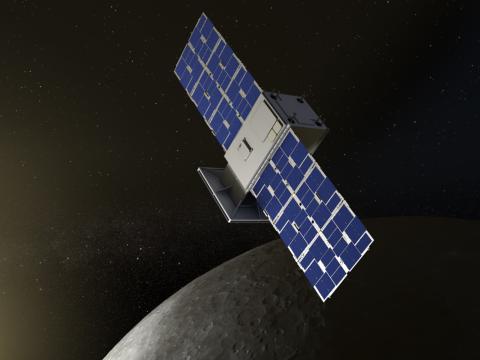
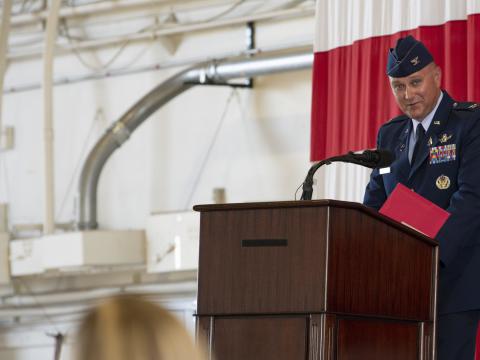

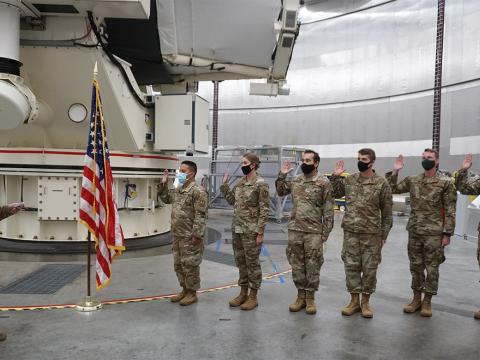
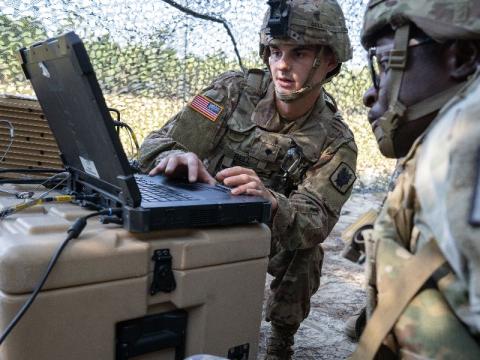
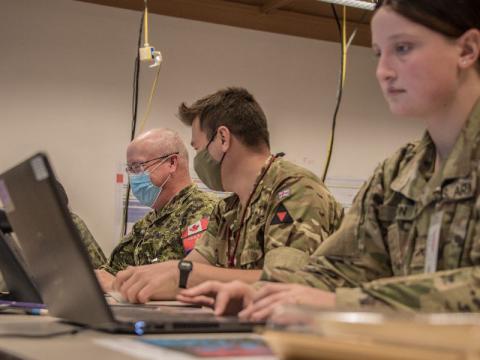
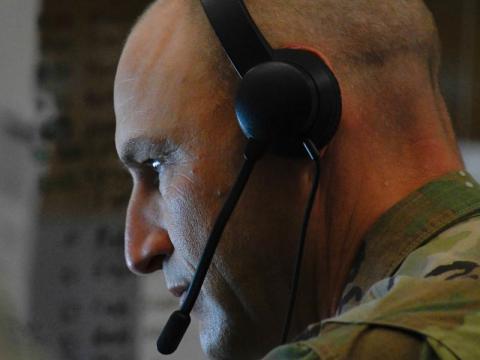
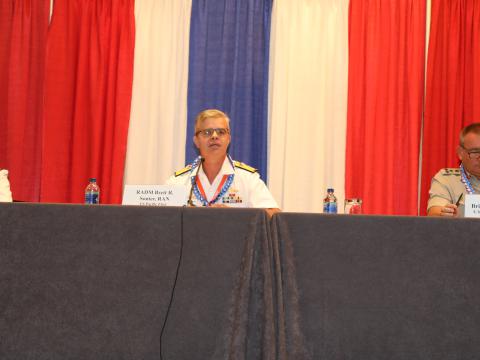

Comments